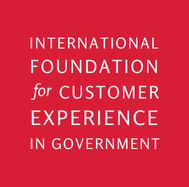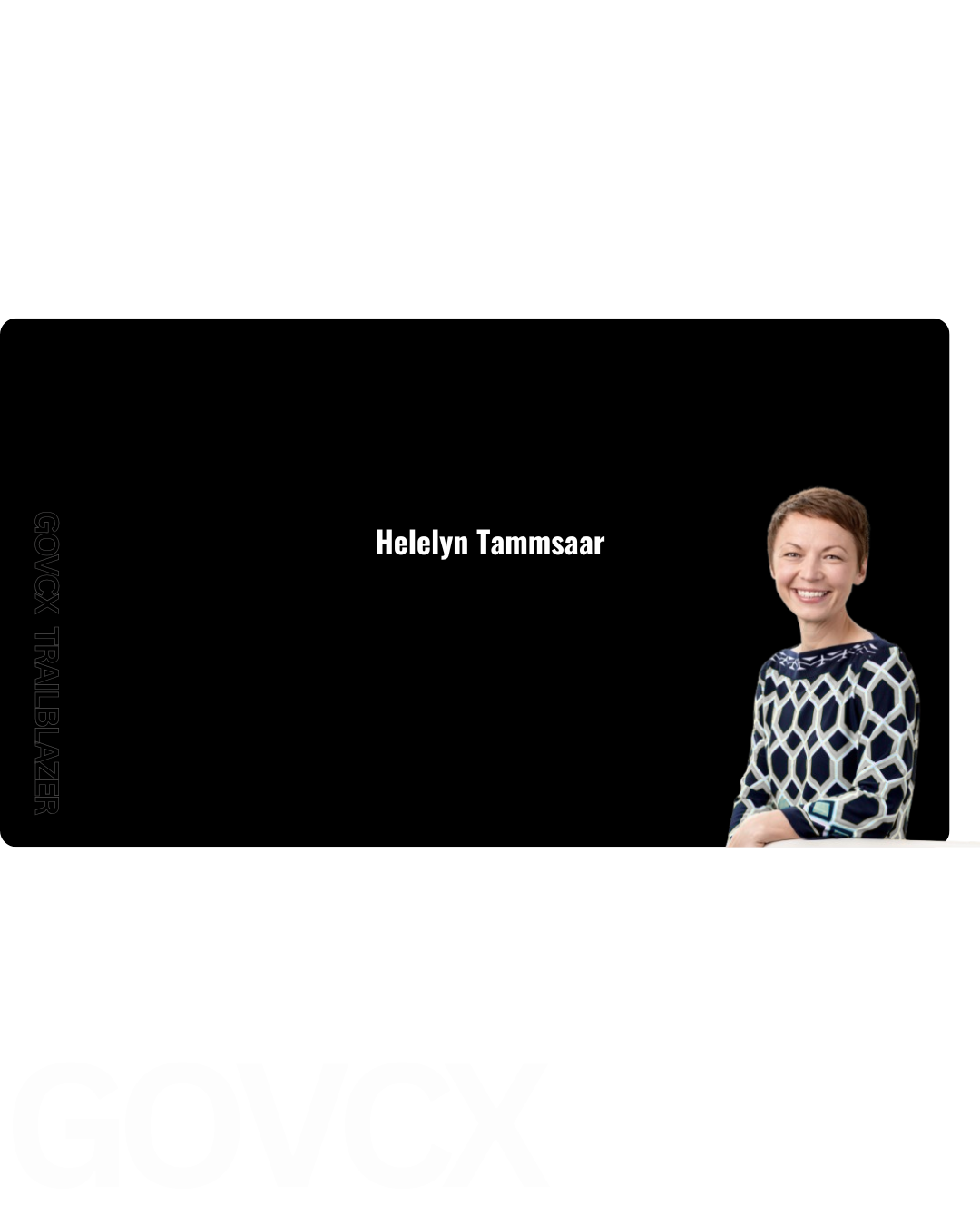2025
Helelyn Tammsaar led Estonia’s Public Sector Innovation Team from 2019 to 2025, bringing a unique lens as both an anthropologist and systems thinker. Her work focused on embedding human insight into policy and service design across government. Under her leadership, the team delivered award-winning projects recognized nationally for their impact and creativity. In this Trailblazer feature, she reflects on the role of design in reshaping government, the friction that holds systems back, and what future leaders need to carry forward.
How It All Started
Helelyn Tammsaar’s path into public sector innovation began long before she joined Estonia’s Government Office. Trained as an anthropologist, she built her early career on a commitment to giving voice to those often unheard. “Before joining the Public Sector Innovation Team,” she reflects, “I worked as an applied anthropologist conducting a variety of research projects, predominantly for the public sector.
“My training in social anthropology has embedded in me a strong mission to give voice to people whose voice is ‘not heard’ -whose life contexts, beliefs, needs and wants go unnoticed by decision makers.”
At first, she thought her work was mainly about helping small, marginalized groups. But after six years of working in government, her perspective changed. She began to see that many people face challenges with public services, not just those at the margins. This experience helped her bring new ways of working into the Estonian public sector, ones that make services more user-centric and focused on everyone’s needs.
What Gets in the Way?
According to Helelyn, one of the biggest challenges in GovCX is not technical, it’s cultural. Civil servants, she notes, often underestimate the extent to which public administration shapes human behavior. And yet, they don’t always have the tools to truly understand it.
“Civil servants play a key role in shaping public policies,” she says, “yet they often fail to recognize how deeply public administration engages in influencing human behavior. To do so effectively, they need to understand behavior. The uncomfortable reality is — they often do not.”
Helelyn Tammsaar explains that traditional decision-making in the public sector depends heavily on research reports, often written by consultancies or academic institutions. “In designing services, in-house or outsourced research teams conduct field studies. When planning interventions, civil servants turn to prior reports, academic literature and, more often than they acknowledge, their own assumptions and ways of reasoning.”
But this approach doesn’t always work in practice. “These methods have their shortcomings. Researchers frequently express frustration that their findings fail to translate into action. Despite presenting evidence-based insights, they are often met with skepticism, counter arguments, defensiveness, or even dismissal. Why aren’t civil servants more open to alternative perspectives and new knowledge?” Helelyn points to expertise itself as part of the problem. “One explanation may lie namely in their expertise. Policy designers and decision-makers are often top specialists with extensive experience. Their broad understanding of the field, its complexities and interdependencies, fosters confidence. However, this same expertise can limit their grasp of everyday realities— the actual experiences of people affected by their policies or public services.”
To shift this mindset, her team introduced a hands-on requirement for every civil servant who joined their service design programs. “A key difference in service design programs our team organized for the whole Estonian public sector, has been the mandatory fieldwork requirement. Every civil servant participating in any of the formats we ran (e.g. Innovation Sprints, Nudgeathons or Experimentation Masterclasses) had to conduct two in-depth interviews — and, when possible, participant observation. They received a short training in interviewing techniques and had their questionnaires refined by anthropologists.
These formats enrolled teams of 6–8 civil servants, generating 12–18 interviews per topic at hand — a sufficient dataset for qualitative research. To synthesize findings, our innovation team used a narration method, where each member re-told their interviews, going in circles until all interviews had been shared.
This process, she explains, helps people see the bigger picture, and move past their own assumptions.
“The result is a collaborative learning experience, where – by educational psychology terminology – the group co-constructs new knowledge about the target group and the challenges they are facing. The narration serves to make dominant patterns visible, brings the lifeworld of the target group to the fore and pushes everyone’s own opinions and experiences to the background.”
This shift from individual viewpoints to shared understanding is what gives the method its power, not only in learning, but in changing how decisions are made across government.
A Vision for the Future of CX
Helelyn draws attention to the rapid advancement of digital tools and data use, which has already made public services more efficient, personalized, and user-friendly. She believes that in the coming years, these services will evolve into even more proactive and tailored experiences;
“The idea of a ‘personalized state’ is gaining momentum. Rather than requiring citizens to navigate complex systems, the state could preemptively identify their needs and deliver support in real-time. We already see this vision taking shape through life-event-based services — such as those triggered by childbirth, marriage, or retirement — that aim to eliminate bureaucratic steps for citizens.”
But this kind of personalization, she cautions, must be handled with care. From her work in the field, she’s seen how people can feel uncomfortable when systems start anticipating their needs too closely.
Yet, as an anthropologist, I remain mindful of the sensitivities this entails within the complexity of life’s circumstances. In a variety of projects, I have witnessed people’s unease with personal offers and services. When is a proactive approach too intrusive? Where is the fine line between personal and private? We must tread carefully, designing systems that respect personal boundaries and individual preferences.
She also sees artificial intelligence playing a major role in shaping how services will evolve. But again, she reminds us that speed and automation are not enough.
“Artificial intelligence will also play a significant role in redefining public service delivery. While it holds potential to reduce workloads and streamline services, we must remain conscious of the human expectations that persist. When does a citizen need empathy rather than efficiency? What builds trust and accountability? These are not just technical questions, they require thoughtful exploration and humility as we continue to design the next generation of public services.”
Advice for the Next Generation of CX Leaders
When asked what advice she would offer to those entering the field, Helelyn strongest advice is to embrace interdisciplinarity. In Estonia’s Public Sector Innovation Team, they brought together anthropology, behavioral science, service design, and product development. In many countries, she have seen these functions being assigned to separate teams or initiatives. This integration allowed her team to approach challenges from multiple angles and develop more holistic, effective solutions.”
She also encourages young professionals to talk to people and stay open to new ideas.
“Collaboration is also essential. Talk to as many people as you can about your project. No one person will hold the full answer, but each conversation will offer insights that enrich your understanding. Pay close attention to the subtleties of context and the complexity of behavior.”
In closing,Helelyn stresses the need to connect directly with the people affected by your work.
“And above all, engage directly with the people your work affects. Listening, observing, and empathizing through fieldwork remain irreplaceable tools for any public innovator committed to making a real difference.”

